Shuttle fliers enter Astronaut Hall of Fame with eye on future in space
David Leestma, Sandy Magnus and Chris Ferguson think the future looks bright.
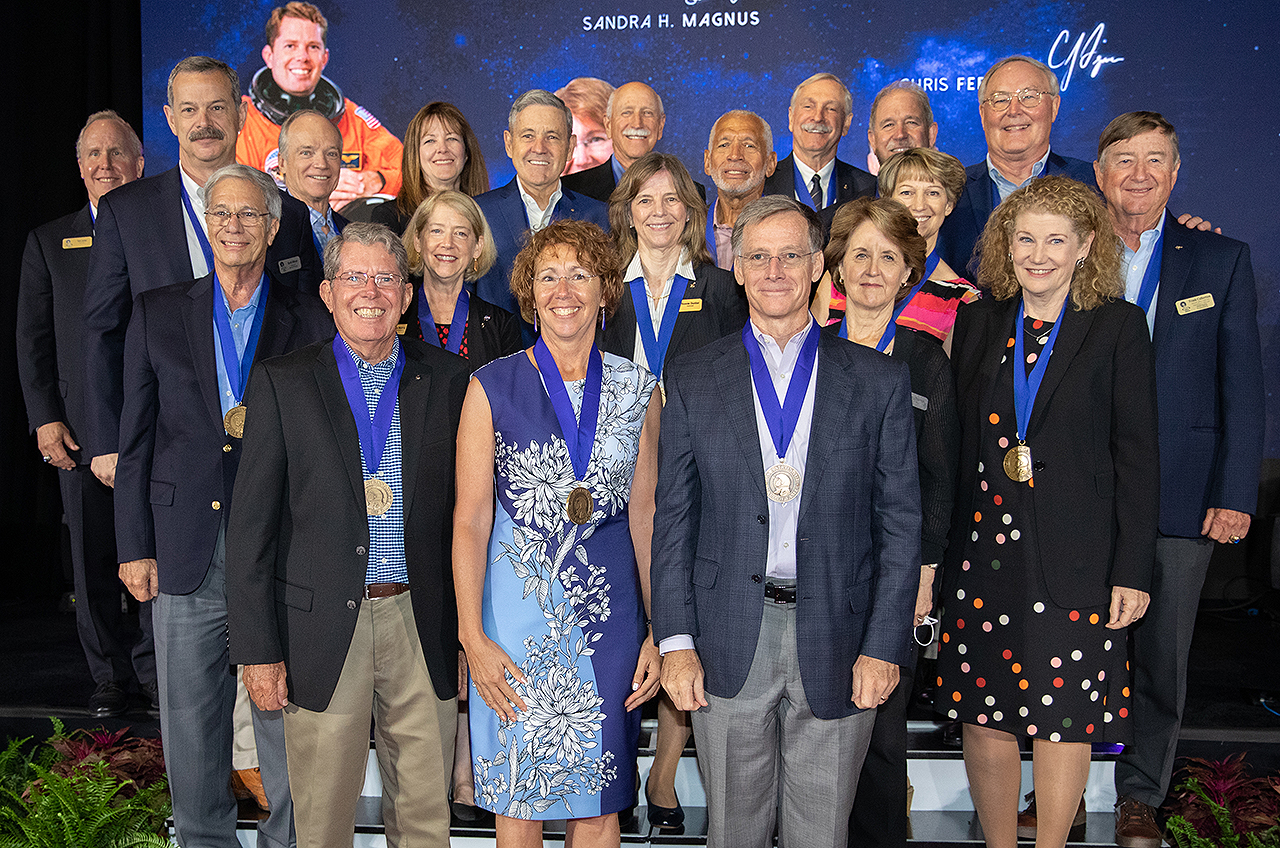
At an event celebrating their past, the three new inductees into the U.S. Astronaut Hall of Fame looked to the future for the promise of space exploration.
Veteran space shuttle fliers David Leestma, Sandy Magnus and Chris Ferguson were honored Sunday (June 11) at a public ceremony held at NASA's Kennedy Space Center Visitor Complex in Florida. The three were enshrined before an audience that included nearly two dozen of their fellow astronauts, while standing under one of the retired winged spacecraft that launched them into Earth orbit.
"Atlantis was always much more of than a spaceship to those of us who had the opportunity to work on and fly her," said Ferguson. "It is a most fitting display."
As members of the 21st class inducted into the Astronaut Hall of Fame, Leestma, Magnus and Ferguson were celebrated for the contributions they made, both on and off the planet. Among them, the two mission specialists and commander flew on seven shuttle missions and one International Space Station (ISS) expedition between 1984 and 2011. Each then went on to hold leadership positions, at NASA and in the space community.
Related: NASA's space shuttle program in pictures
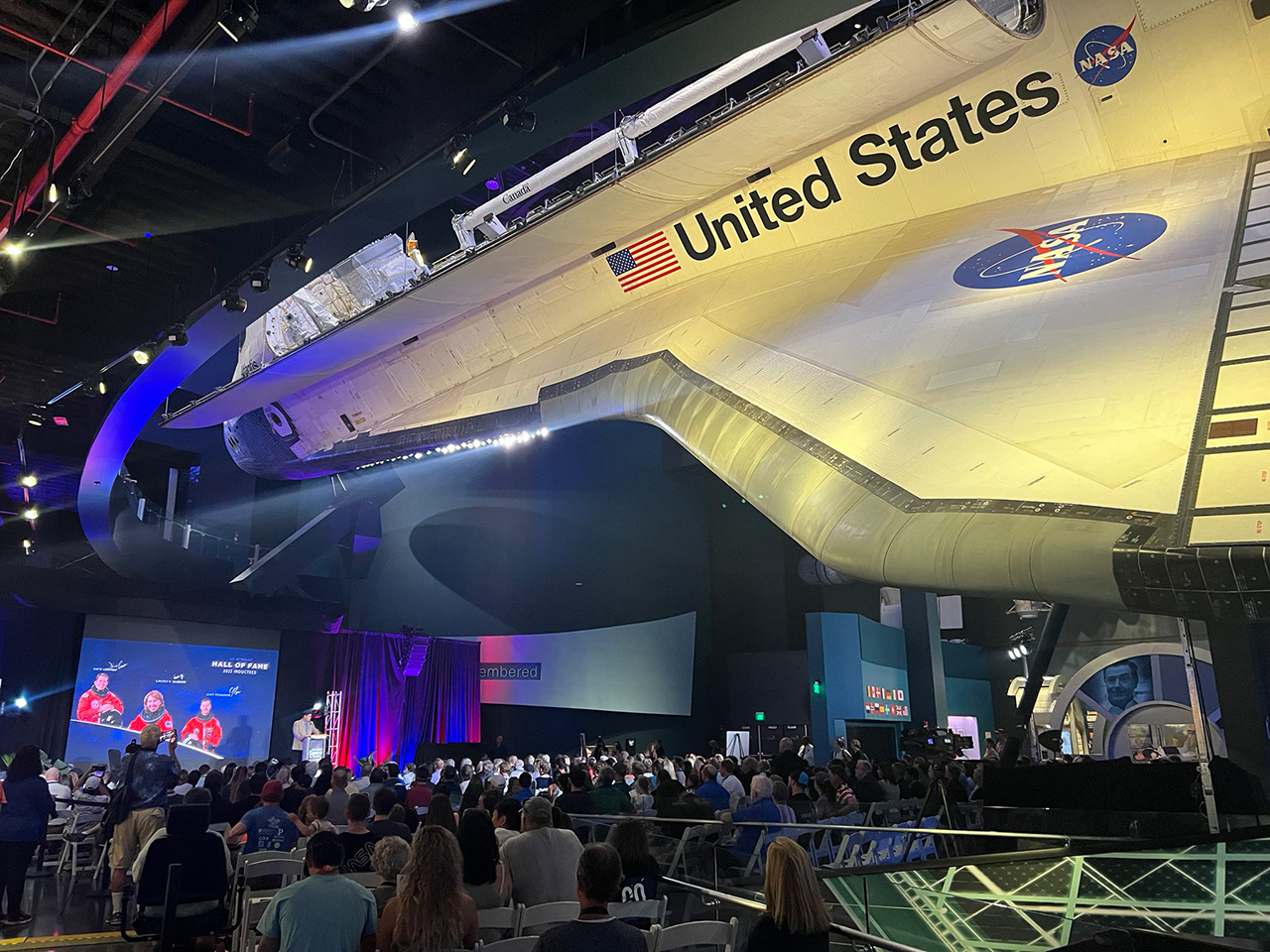
"We often say at the Kennedy Space Center that we launch the dreams of the nation, but it is the dedicated men and women like David, Sandy and Chris who carry those dreams and lead the way for future endeavors," said Janet Petro, Kennedy Space Center director. "Their bravery, their perseverance, determination, teamwork, integrity and pursuit of knowledge have only strengthened the NASA legacy."
"As we embrace this next new era of spaceflight and look ahead to new discoveries and new knowledge to be unlocked, we honor those such as Dave, Sandy and Chris, who have paved the way for the next 60 years and beyond for science research and exploration. Today, we recognize their achievements and celebrate their contributions to our agency, our country and our planet. Congratulations to the inductees; this is an honor well deserved," she said.
Get the Space.com Newsletter
Breaking space news, the latest updates on rocket launches, skywatching events and more!
'Wild west of space exploration'
Accepting their place in the hall, Leestma, Magnus and Ferguson each recounted their history with the U.S. space program, but also addressed what is coming next.
"Human spaceflight is a difficult and varied endeavor. And I think it is a very worthwhile one, too," said Leestma, whose first of three spaceflights was on the 13th shuttle mission, preceding the first of NASA's two shuttle tragedies. "We've had some setbacks, we have recovered from them and learned and sometimes re-learned some very important lessons."
"The next decade is going to be quite exciting from a space perspective," Leestma said. "I look forward to watching us all learn even more about living and working in space."
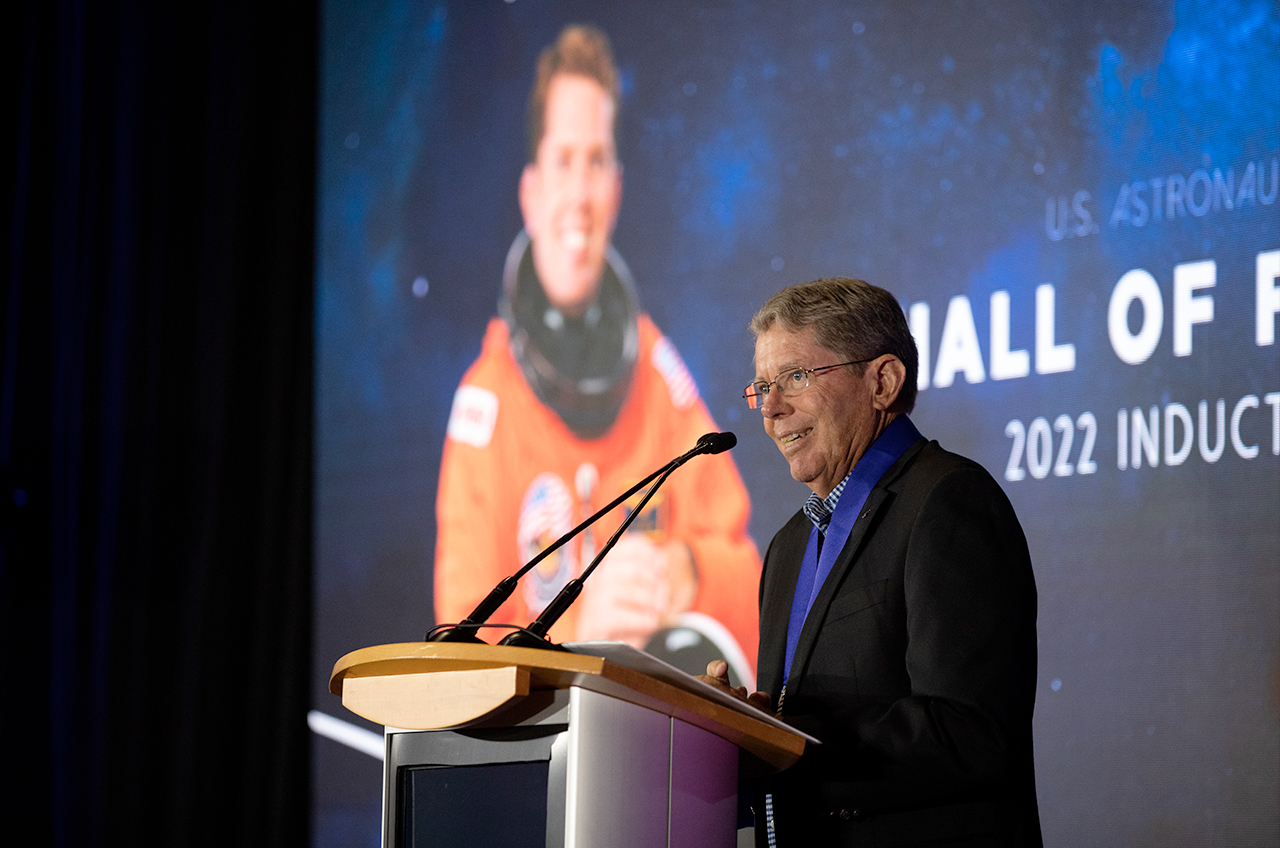
For Magnus, who lived on the International Space Station for 134 days before joining Ferguson on the final flight of the space shuttle program in 2011, it is what is coming in the next that really "boggles her mind."
"The breadth and the depth of activities that are unfolding both on Earth and in space is incredible," she said. "We live in a world now where you have the opportunity to experience space as a private citizen; where college and even high school students can design, build, launch and operate small satellites; where ideas about manufacturing in space, mining asteroids and building infrastructure on the moon to support human missions are emerging everywhere."
"No matter what your passions or your interests, there's a place for you in the space industry," Magnus said. "Perhaps one of you in the audience will be on this very stage some decades in the future, and I look forward to that."
After flying three missions for NASA, Ferguson joined the Boeing Company to help lead the development of the CST-100 Starliner, a commercial crew spacecraft that just completed its first successful uncrewed mission to the space station.
Related: Boeing's Starliner OFT-2 spacecraft test flight for NASA in photos
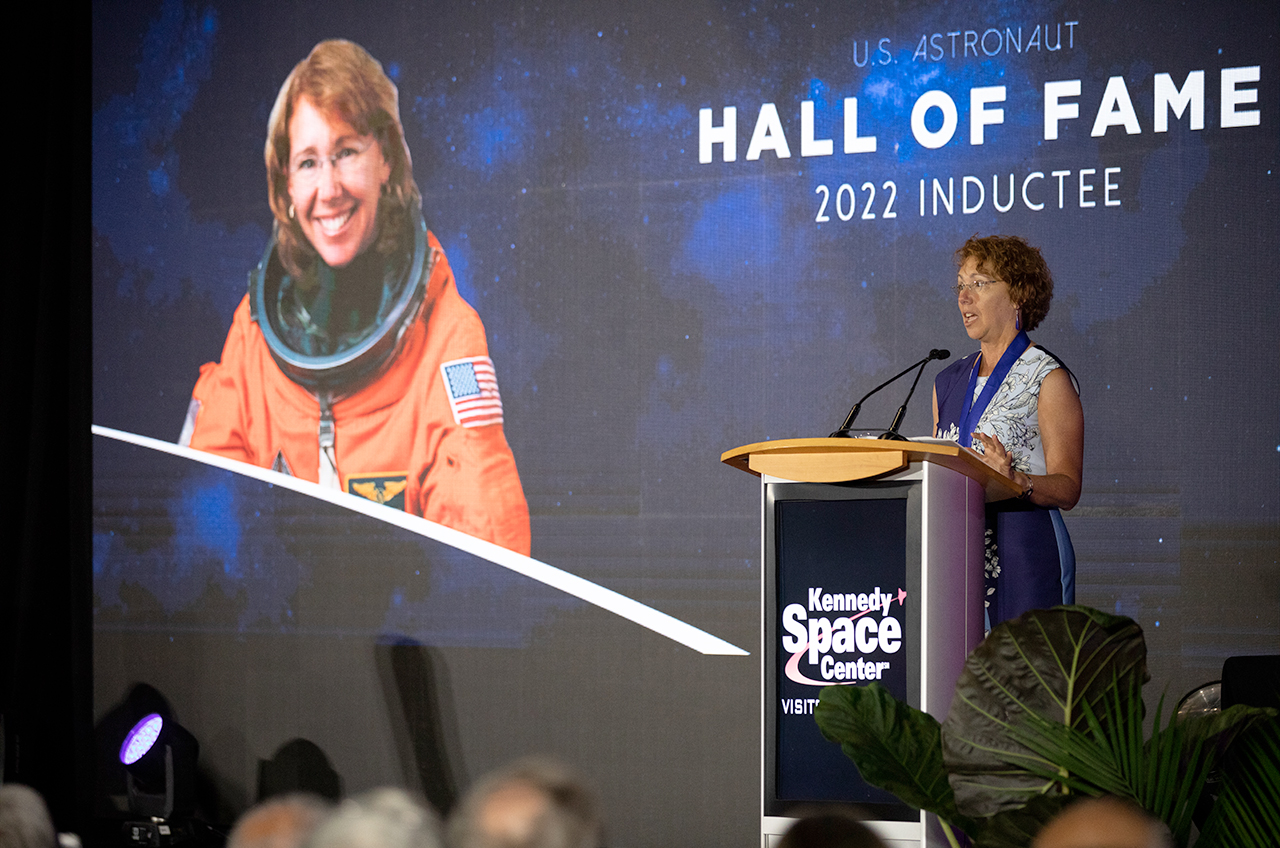
"For those of you aware of the ebb and flow of human spaceflight, you may not be surprised that 10 years ago, the Kennedy Space Center was practically a ghost town. The shuttle had been retired, Artemis was still a glimmer in NASA's eye and this crazy idea of sending commercial companies to deliver cargo and then people to the International Space Station was considered part heresy and part insanity," Ferguson said.
"Today, though, wow. The Space Launch System is poised to take off with the first Artemis mission later this year, I hope, and soon we will send humans back to the moon. Companies like Boeing, SpaceX, Northrop Grumman and Sierra Nevada are either already launching or getting ready to launch cargo and astronauts to the ISS. The Space Force X-37 now occupies two of the former orbiter processing buildings, and Blue Origin is rearranging a part of the state of Florida not far from here, constructing the launch facility for the New Glenn, itself a 300-foot monster rocket," he said. "And all the while, in the U.S. launch business for decades, the United Launch Alliance was quietly and safely launching over 150 Delta and Atlas rockets."
"Yes, the Kennedy Space Center and Cape Canaveral are the 'wild west' of space exploration today," said Ferguson.
Role models
With their entrance into the hall, Leestma, Magnus and Ferguson raised the total number of inductees to 105.
Selected by a committee overseen by the Astronaut Scholarship Foundation, the three 2022 honorees were chosen from a pool of nominees who were all U.S. citizens, a NASA-trained commander, pilot or mission specialist who orbited Earth at least once and who made his or her first flight at least 17 years prior to this year.
Plaques bearing the likenesses of Leestma, Magnus and Ferguson, as well as the mission patches from their respective spaceflights, will be hung in the Astronaut Hall of Fame, which since 2016 has been part of the Heroes & Legends attraction at the Kennedy Space Center Visitor Complex.
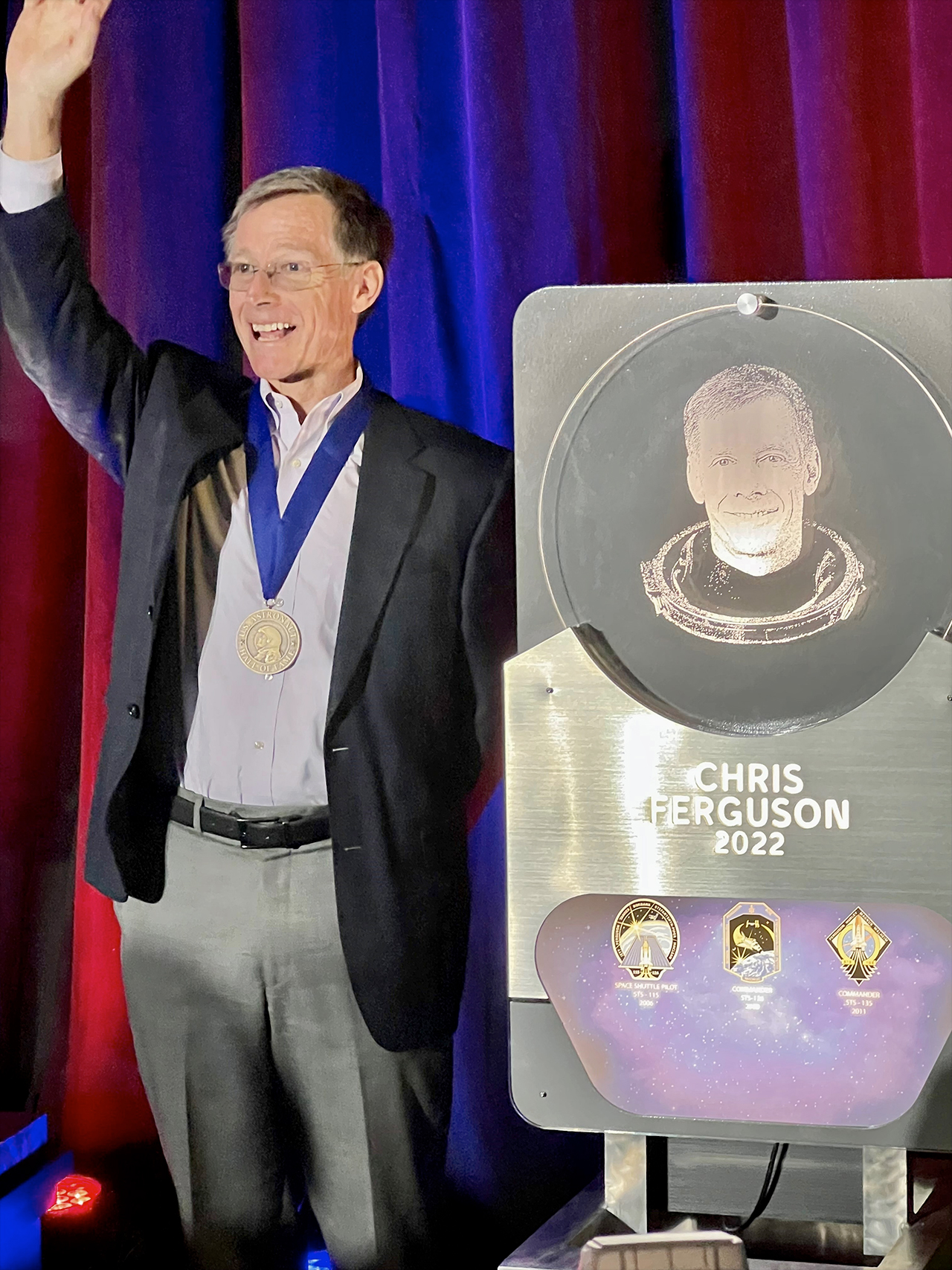
As new inductees, Leestma, Magnus and Ferguson will be invited to support the activities of the scholarship foundation, which since its founding has awarded more than 700 of the United States' top science and engineering undergraduate students, totaling a distribution of more than $7 million. They will also become role models for many of the visitors who tour the Hall.
"I have a firm belief in the power of role models to inspire youth to achieve their dreams," said Magnus. "A role model is anyone a young person can form a connection to and that connection allows them to see part of that and themselves in that person. That connection is super powerful. It motivates, it builds hope, and it illuminates a path for the young person to follow."
Follow collectSPACE.com on Facebook and on Twitter at @collectSPACE. Copyright 2022 collectSPACE.com. All rights reserved.
Join our Space Forums to keep talking space on the latest missions, night sky and more! And if you have a news tip, correction or comment, let us know at: community@space.com.

Robert Pearlman is a space historian, journalist and the founder and editor of collectSPACE.com, a daily news publication and community devoted to space history with a particular focus on how and where space exploration intersects with pop culture. Pearlman is also a contributing writer for Space.com and co-author of "Space Stations: The Art, Science, and Reality of Working in Space” published by Smithsonian Books in 2018.In 2009, he was inducted into the U.S. Space Camp Hall of Fame in Huntsville, Alabama. In 2021, he was honored by the American Astronautical Society with the Ordway Award for Sustained Excellence in Spaceflight History. In 2023, the National Space Club Florida Committee recognized Pearlman with the Kolcum News and Communications Award for excellence in telling the space story along the Space Coast and throughout the world.










